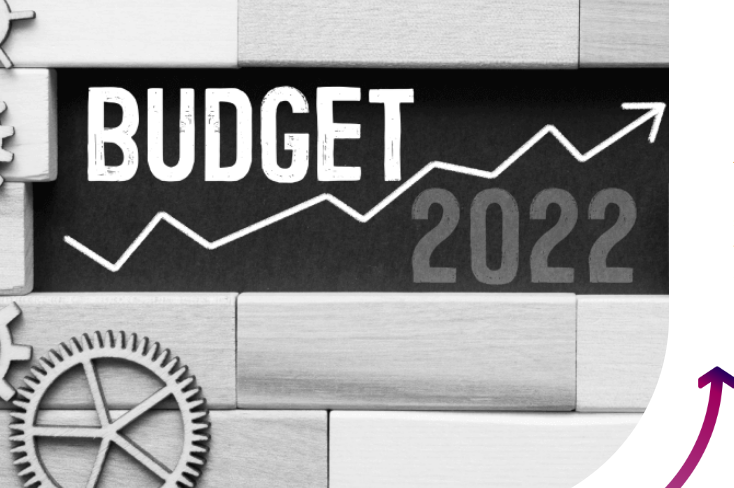The Low and Middle Income Tax Offset (LMITO) will no longer be available for the 2022-23 income year and subsequent years. Additionally, there have been no changes to the personal income tax rates for the 2022-23 income year or for subsequent years.
Tax Rates Remain Unchanged
The Budget did not announce any changes to the personal income tax rates for the 2022-23 income year. The tax rates and income thresholds for residents are unchanged from the previous year. The taxable income thresholds and corresponding tax rates listed are accurate. Additionally, the Stage 3 tax changes, which were previously legislated, will commence from 1 July 2024.
The 2022–2023 tax rates and income thresholds for residents are unchanged from 2021–2022: taxable income up to $18,200 – nil; taxable income of $18,201 to $45,000 – nil plus 19% of excess over $18,200; taxable income of $45,001 to $120,000 – $5,092 plus 32.5% of excess over $45,000; taxable income of $120,001 to $180,000 – $29,467 plus 37% of excess over $120,000; and taxable income of more than $180,001 – $51,667 plus 45% of excess over $180,000.
The Budget did not announce any changes to the previously legislated Stage 3 personal income tax changes, which are set to commence from 1 July 2024. The 32.5% marginal tax rate will be cut to 30% for the tax bracket between $45,000 and $200,000, and the 37% tax bracket will be entirely abolished at this time.
This will create a more closely aligned middle tax bracket of the personal income tax system with corporate tax rates. The new tax structure will have three personal income tax rates: 19%, 30% and 45%. With these changes, around 94% of Australian taxpayers are projected to face a marginal tax rate of 30% or less.
Paid Parental Leave
The Government has also announced plans to expand the paid parental leave (PPL) scheme from 1 July 2023. The changes will allow either parent to claim the payment and both birth parents and non-birth parents to receive the payment if they meet the eligibility criteria. Parents will also be able to claim weeks of the payment concurrently, allowing them to take leave at the same time. From 1 July 2024, the scheme will be expanded by two additional weeks a year until it reaches a full 26 weeks from 1 July 2026.
Both parents will be able to share the leave entitlement, with a proportion maintained on a “use it or lose it” basis, to encourage and facilitate both parents to access the scheme and to share the caring responsibilities more equally. Sole parents will be able to access the full 26 weeks.
The expansion of the PPL scheme will benefit over 180,000 families each year and the amount of PPL available for families will increase up to a total of 26 weeks from July 2026.
For further information about how this applies to you, please call us at High Numbers on 03 9837 5464
BUSINESS TAXATION
The Government has changed a number of tax and superannuation related measures and will abandon eight of these, with three others will have deferred start dates.
These finance-related proposed changes have been cancelled:
- the 2013–2014 Mid-Year Economic and Fiscal Outlook (MYEFO) measure that proposed to amend the debt/equity tax rules;
- the 2016–2017 Budget measure that proposed changes to the taxation of financial arrangements (TOFA) rules;
- the 2016–2017 Budget measure that proposed changes to the taxation of asset-backed financing arrangements; and
- the 2016–2017 Budget measure that proposed introducing a new tax and regulatory framework for limited partnership collective investment vehicles.
SUPERANNUATION AND RETIREMENT MEASURES
These superannuation and retirement related measures have been abandoned:
- the 2018–2019 Budget measure that proposed changing the annual audit requirement for SMSFs;
- the 2018–2019 Budget measure that introducing a requirement for retirement income product providers to report standardised metrics in product disclosure statements. The Government will defer the start date for the following proposed third-party reporting rules:
- transactions relating to the supply of ride sourcing and short-term accommodation – from 1 July 2022 to 1 July 2023; and
- all other reportable transactions – from 1 July 2023 to 1 July 2024.
The Government proposes to extend the third-party reporting regime to the operators of electronic information.
This includes distribution platforms (EDPs) that facilitate supplies from one entity to another entity.
Additionally, the 2018–2019 Budget measure that proposed introducing a limit of $10,000 for cash payments made to businesses for goods and services has been cancelled.
The 2021–2022 MYEFO measure that proposed establishing a deductible gift recipient (DGR) category for providers of pastoral care and well being services in schools has been abandoned.
TAX COMPLIANCE AND INTEGRITY
The Government will increase funding for the ATO in these areas.
Personal Income Taxation Compliance Program
The Government will fund $80.3 million to the ATO to extend the Personal Income Taxation Compliance Program for two years from 1 July 2023. Focussing on key areas of non-compliance, such as overclaiming of deductions and incorrect reporting of income (which was the subject of a recent key address by the Second Commissioner). This will enable the ATO to modernise its guidance products and engage earlier with taxpayers and tax agents.
Shadow Economy Program
The Government is extending the existing ATO Shadow Economy Program for another three years from 1 July 2023
Tax Avoidance Taskforce
Boosted funding for the ATO Tax Avoidance Taskforce of around $200 million per year over four years from 1 July 2022, in addition to retaining this Taskforce for a further year from 1 July 2025.
Modernising Business Registers Program
The Government will also provide more ATO and ASIC funding of $166.2 million over four years from 2022–2023 to continue operating the Modernising Business Registers program that will consolidate more than 30 business registers into a modernised registry platform.
Digital currencies
Budget Papers confirm that legislation to clarify those digital currencies (such as Bitcoin) continue to be excluded from the Australian income tax treatment of foreign currency.
SUPERANNUATION
Confirmation that changes to the SMSF residency rules, previously disclosed in the 2021–2022 Budget to commence from 1 July 2022, will now commence from the income year starting on or after the date of assent of the enabling legislation (which is still to be introduced).
Until this 2021–2022 Budget measure is law, SMSF trustees need to ensure they satisfy the current requirements.
Three-year cycle for SMSF audits will not now proceed.
Standardised disclosure for retirement income products
The Government says it will not proceed with reporting standardised metrics in product disclosure statements (PDS) for retirement income products.
Superannuation downsizer contributions eligibility age reduction to 55 confirmed
The Government confirmed its pre-election promise to lower the minimum eligibility age for superannuation downsizer contributions to age 55 (previously it was from age 60).
The reduction in the eligibility age allows individuals 55 or over to make an additional non-concessional contribution of up to $300,000 from the selling of their primary residence outside of the existing contribution caps.
Assets test exemption for two years; deeming rates frozen
The Government also confirmed its pre-election promise to help pensioners downsizing their primary homes, by extending the social security assets test exemption from 12 months to 24 months. Other details also apply.
HOUSING MEASURES
Regional First Home Buyers Guarantee Scheme and Housing Australia Future Fund.
The Government announced a Regional First Home Buyers Guarantee aiming to encourage home ownership in the regions. Applying to eligible citizens and permanent residents who have lived in the regional area for more than 12 months to purchase a first home in that location with a minimum 5?posit.
New Housing Accord: $350 million in Government funding
There will be a new national Housing Accord between state and territory governments, investors and others.
This Housing Accord sets an initial target of 1 million new homes over five years from 2024. The Government will commit $350 million over five years to build 10,000 affordable dwellings at an energy efficiency rating of seven stars or greater. This commitment is in addition to the 30,000 new social and affordable dwellings delivered through the Housing Australia Future Fund.
States and territories will also build on this program by providing contributions that enable delivery of up to an additional 20,000 homes.
Source: https://www.highnumbers.com.au/insight/taxation-measures-from-the-october-2022-federal-budget/

 High Numbers Pvt Ltd.
High Numbers Pvt Ltd.




